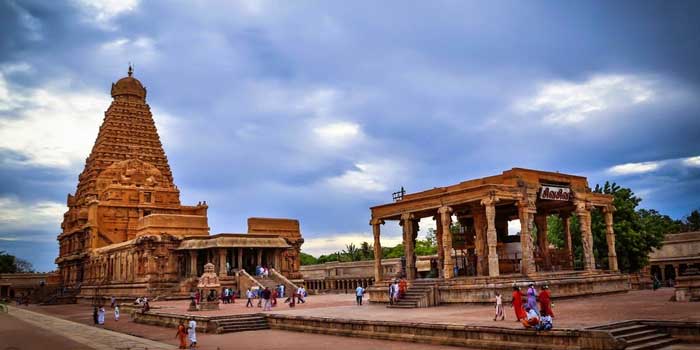
India's Top 10 UNESCO World Heritage Sites
2023-07-12
India's Top 10 UNESCO World Heritage Sites
A nation's artistic heritage is a magnificent reminder of its outstanding past. That priceless inheritance should be protected so it can be passed down through the generations. While a nation may be home to many architectural marvels, only a select few are of significant global significance.
These cultural treasures are so unique that safeguarding these places becomes a priority for all humanity. UNESCO World Heritage Sites have designated these historical expressions, and these international organisations prioritise their preservation.
The selection of these locations as World Heritage Sites demonstrates their significance on a global scale. However, a few can be ranked in the top 10 due to their popularity and historical significance.
India's Top 10 World Heritage Sites list
Taj Mahal
The Taj Mahal, one of the Seven Wonders of the World, is undoubtedly India's most significant World Heritage Site. The Taj Mahal complex is regarded as Islamic and Indo-Islamic architecture's pinnacle achievement.
The Taj Mahal is India's most well-known site because of its magnificent, flawlessly symmetrical complex and interesting marble walls of the mausoleum with semi-precious inlaid stones and numerous ornamentation.
Ajanta Caves
One of the earliest UNESCO World Heritage sites in India is the Ajanta Caves, situated on a horseshoe-shaped hill in the Waghora River area in the Indian state of Maharashtra. In Ajanta, thirty painted and carved caves comprise a collection of works of exceptional aesthetic and religious significance. The Ajanta Caves earliest Buddhist temples belong to the second and first centuries BC, while the later structures date to the Gupta era. The ancient text Jataka, which describes events from the Buddha's life in the various incarnations he underwent on his path to Enlightenment, is abundantly illustrated in these works.
Ellora Caves
Thirty-four monasteries and temples are rock-cut into the cliff wall of basaltic rock more than 2 kilometres long in the Ellora caves. They are situated in Maharashtra, not far from Aurangabad. The Ellora Caves, a UNESCO World Heritage site, is home to artwork produced between the sixth and the twelfth centuries AD. They are significant not just for their exceptional creative accomplishments but also for the shrines dedicated to Buddhism, Hinduism, and Jainism that reflect the tolerant nature of ancient India.
Red Fort
The Red Fort, located in the heart of the old city of New Delhi, was constructed by Emperor Shah Jahan when he moved his capital from Agra to Delhi, or what was then known as Shahjahanabad. Several aspects of the Red Fort exhibit the merging of Indo-Islamic, Timurid, Hindu, and Persian architectural styles. It is constructed of red sandstone and contains several lesser structures, including the private pavilions, the Diwan-i-Khas, and the Diwan-i-aam. The Archaeological Survey of India officially manages the Red Fort, one of India's most well-known UNESCO World Heritage Sites.
Jantar Mantar
The Jantar Mantar, an astronomical observation point constructed in the early 18th century near Jaipur, is one of India's well-known works and philosophical contributions. One of the five observatories Maharaja Sawai Jai Singh II, the monarch of the kingdom of Amber, established is this astronomical observatory, a UNESCO World Heritage site. He drew inspiration from ancient Greek and Persian observatories since he had a deep interest in mathematics and astronomy. One of India's most famous and well-preserved historical observatories has about 20 major instruments built to observe celestial locations.
Sun Temple
According to Hindu mythology, the sun deity Surya rides through the sky in a chariot driven by seven horses, and the temple portrays his chariot. Along with the number of horses, the 24 wheels, each measuring 3 metres in diameter, on the north and south sides represent the seasons, months, and days of the week. The temple is divided into numerous ordered spatial divisions and oriented east to west, following the sun's movement across the sky. It is a unique temple in Odisha and one of India's cultural heritage monuments due to the perfect blending of architecture with ornamental reliefs of naturally carved animal and human figures.
Group of Monuments at Hampi
The village of Hampi is found in the Indian state of Karnataka. One of India's most important heritage sites is Hampi, which served as the Vijayanagara Empire's capital and a major hub for trade, culture, and religion from the 14th to the 16th century.
The rocks that formerly formed colossal granite monoliths provide fascinating data about the topography of Hampi. Although there are clear signs of Islamic architecture from the north, the monuments in Hampi are thought to represent examples of the traditional Hindu architecture of southern India.
Mahabodhi Temple at Bodh Gaya
The Mahabodhi Temple Complex at Bodh Gaya in Bihar is one of the most sacred locations in connection with the life of Lord Buddha and the location where he acquired Enlightenment. One of the first brick temples in India, the structure is primarily composed of bricks and stucco. In addition to the temple, the complex houses the sacred Bodhi tree, the Lotus Pond, the Vajrasana, the diamond throne of Buddha, and other holy sites encircled by age-old votive stupas and shrines. Despite being a small village, Bodh Gaya is home to temples and monasteries from several countries with a Buddhist tradition, including Japan, Thailand, Tibet, Sri Lanka, Bangladesh, etc.
Churches & Convents of Goa
Up until 1961, Goa remained a Portuguese colony. The Jesuits first arrived in Goa in 1542, the same year Francis Xavier established himself as the region's patron saint and started baptising locals and erecting churches. Seven significant structures were erected churches out of the 60 built. Some more stunning examples include the Chapel of St. Catherine, the church and monastery of St. Francis of Assisi, and the church of Bom Jesus, which houses Francis Xavier's remains. With its monuments that influenced the spread of the Manueline style, mannerism, and baroque to all Asian countries where missions were established, this former centre of the Portuguese Empire portrays the evangelization of Asia. One of India's most intriguing heritage monuments is the Churches and Convents of Goa, which feature a distinctive Indo-Portuguese design. Goa with Kerala trip is the best way to visit world heritage sites in Goa with India Personal Tours.
Khajuraho Group of Monuments
One of India's heritage sites, Khajuraho, is situated in the northern Indian state of Madhya Pradesh and is home to over twenty temples with Nagara-style architecture that date to the 10th and 11th centuries. of the several temples constructed in Khajuraho over the Chandella era.
The three principal components of each sandstone temple are the entryway, the ceremonial hall, and the sanctuary. The primary groups of temples of the Khajuraho UNESCO World Heritage Site are separated into two sections: the western section, which contains Hindu temples, and the eastern section, which has Jain temples. The Tantric School of Thought strongly influenced the elaborate reliefs that filled the temples. Since nothing exists without the harmony of the feminine and masculine principles, they depict all facets of life, including sensual ones.
